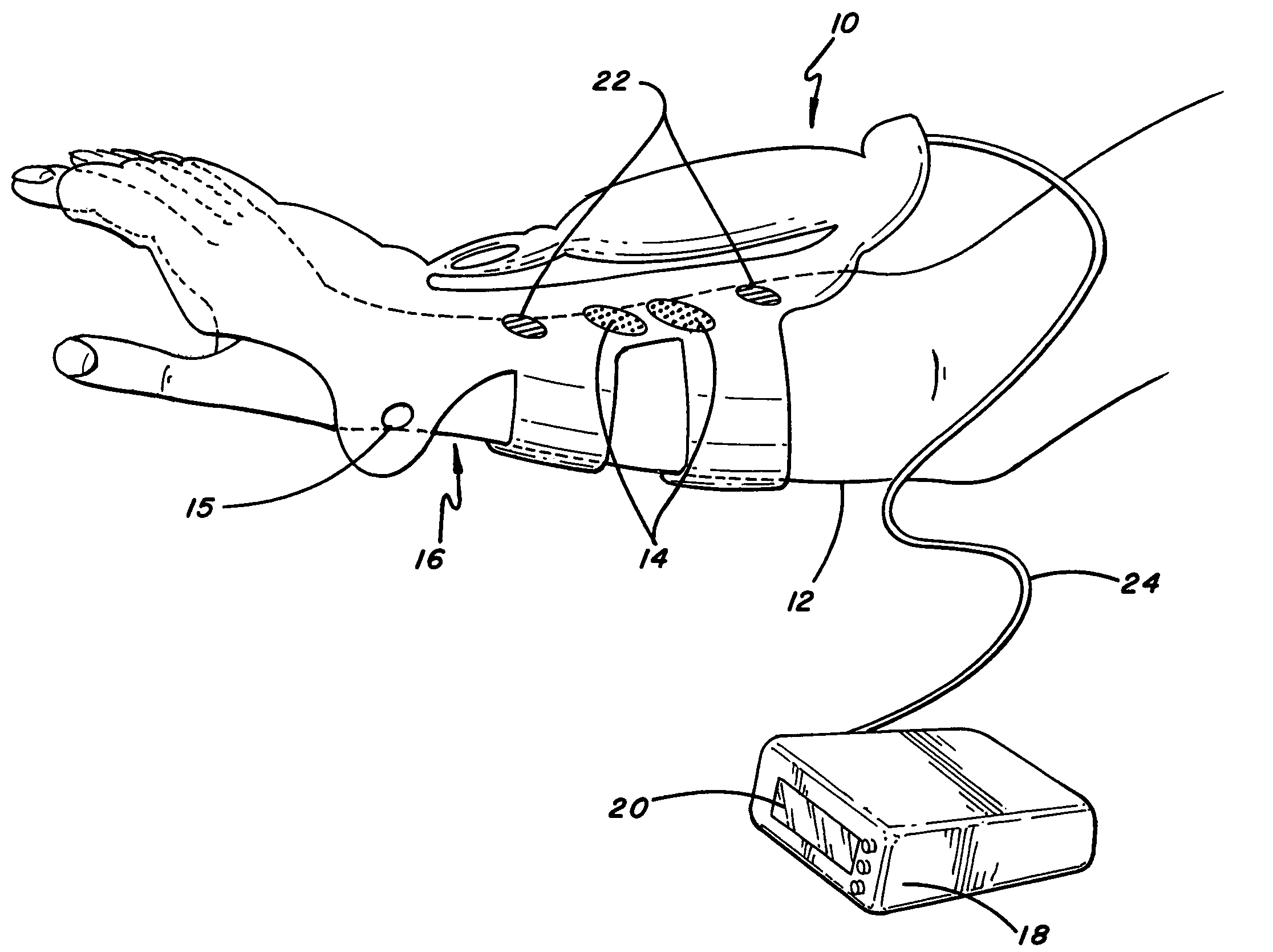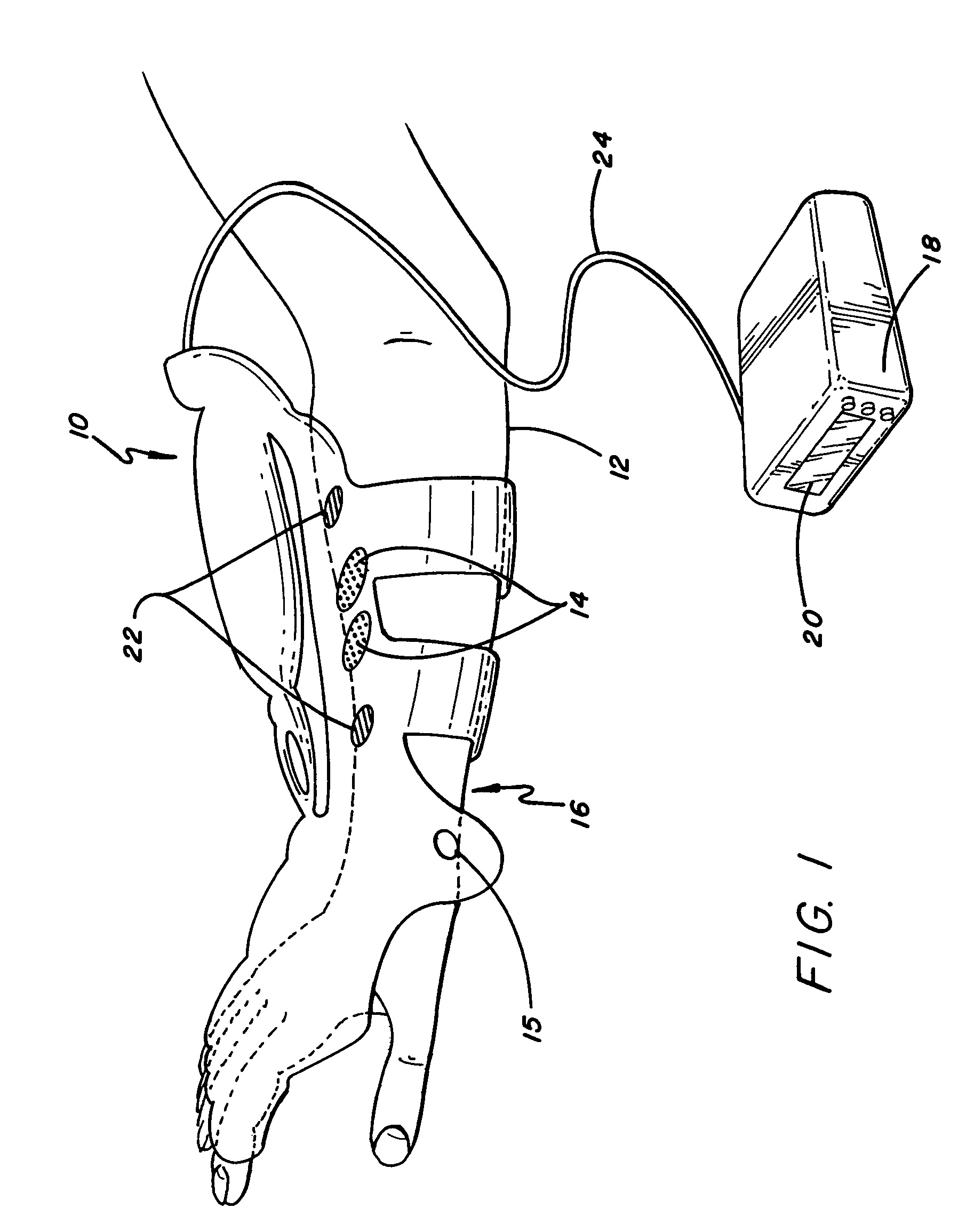System and method for neuromuscular reeducation
a neuromuscular and reeducation technology, applied in the field of biomonitoring in patients, can solve the problems of low patient contact time, low efficiency, labor-intensive stroke therapy, etc., and achieve the effect of reducing the amount of patient contact time and increasing the amount of information
- Summary
- Abstract
- Description
- Claims
- Application Information
AI Technical Summary
Benefits of technology
Problems solved by technology
Method used
Image
Examples
Embodiment Construction
[0038]Referring now to the drawings and in particular to FIG. 1, there is shown motion causing device or an actuator 10 attached to the proximal forearm 12 along with various sensors 14,15 for monitoring activity along the proximal forearm 12 and the at least one joint 16, at least one electrostim electrode 22 for providing a low-level neuromuscular stimulation, and a controller box 18 with a display port 20 for providing visual feedback for a patient / therapist. The system shown in FIG. 1 is used for neuromuscular function reeducation and restoring physical function of at least one neuromuscular system.
[0039]It is important that the actuator 10 permit relative motion between the proximal and distal portions of the joint 16 in a manner to minimize any hindrance or interference with any motion generated by the patient's neuromuscular system.
[0040]In one embodiment, the actuator 10 is a pneumatically operated air-muscle. A prior art artificial muscle device exhibits many of the propert...
PUM
 Login to View More
Login to View More Abstract
Description
Claims
Application Information
 Login to View More
Login to View More - R&D
- Intellectual Property
- Life Sciences
- Materials
- Tech Scout
- Unparalleled Data Quality
- Higher Quality Content
- 60% Fewer Hallucinations
Browse by: Latest US Patents, China's latest patents, Technical Efficacy Thesaurus, Application Domain, Technology Topic, Popular Technical Reports.
© 2025 PatSnap. All rights reserved.Legal|Privacy policy|Modern Slavery Act Transparency Statement|Sitemap|About US| Contact US: help@patsnap.com



